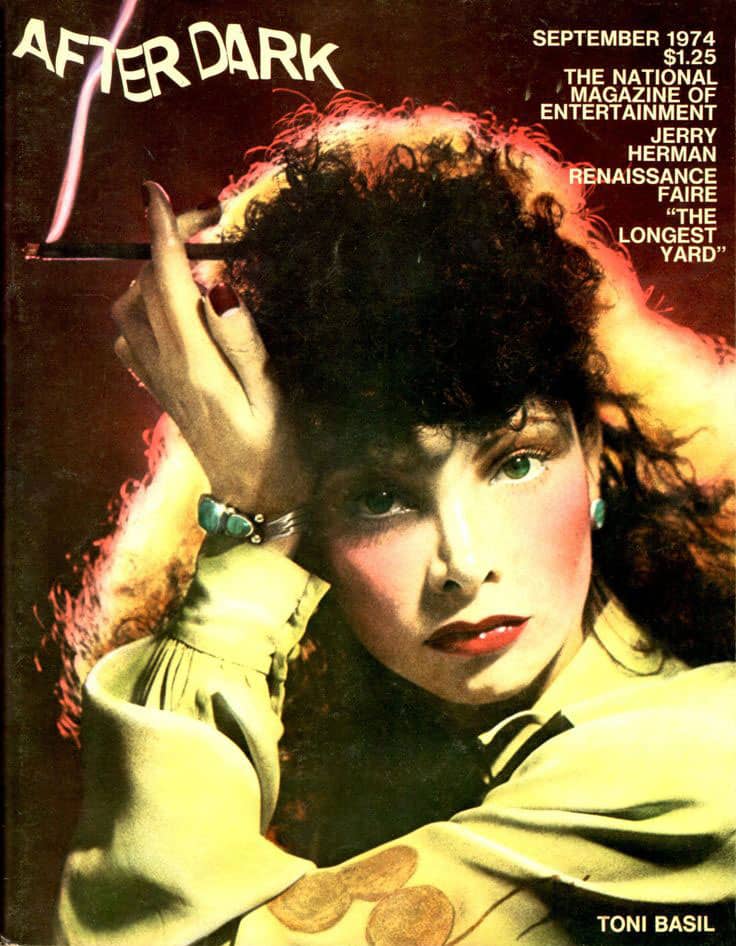Cover artwork
David Bowie began working up ideas for the Young Americans album cover shortly after the first Sigma sessions concluded in August 1974.He had originally requested a painting from the American artist and writer Norman Rockwell, but Rockwell’s work pace and Bowie’s restlessness proved incompatible.
I really wanted Norman Rockwell to do an album cover for me. Still do. I originally wanted him for the cover of Young Americans. I got his phone number and called him up. Very quaint. His wife answered and I said, ‘Hello, this is David Bowie,’ and so on. I asked if he could paint the cover. His wife said in this quavering, elderly voice, ‘I’m sorry, but Norman needs at least six months for his portraits.’ So I had to pass, but I thought the experience was lovely. What a craftsman. Too bad I don’t have the same painstaking passion. I’d rather just get my ideas out of my system as fast as I can.
Playboy, September 1976
He drew inspiration instead from a portrait of Toni Basil, which appeared on the cover of the September 1974 issue of After Dark magazine. Basil had recently worked with Bowie as the choreographer on the Diamond Dogs Tour, and her portrait was taken by photographer Eric Stephen Jacobs.
Jacobs had developed a style of hand-tinting black-and-white photographs in the style of 1940s Hollywood stars. Basil had knocked on his studio door in the summer of 1974, asking to be photographed by him.
I almost fell over. She was movie star gorgeous, with a hip, retro style of dress, and a huge mass of dark curly hair, as they wore in the old Hollywood era. She was perfect for my new style. We both had an appreciation for the whole hip, retro, classic sensibility. Toni was mighty hip – I could see why David would want to work with her. We got along famously.
Uncut, October 2016
Bowie telephoned Jacobs and explained that his portrait of Basil was precisely the style he wanted for the Young Americans cover.
I would have expected his people to call my people, as they say. But there we were talking one on one! David was in LA performing – so I made the trip to California to shoot him on what was an old movie studio sound stage. There wasn’t much time, but I knew he wanted an image as similar to the Toni Basil After Dark cover as possible.
Uncut, October 2016
The photo shoot took place in Los Angeles on 30 August 1974. They approximated the Basil portrait, right down to the backlighting, cigarette smoke, and glistening jewellery.
It was a bit rushed for me… the car took me directly to the studio where we were to be doing the photo session before I’d checked into my hotel. We used the original old-fashioned studio klieg lights, which were a bit hard for me to control.David’s makeup and hair man, Jack Collello, did the prep, and his wardrobe people picked the Tattersall cotton shirt. Had I been older and wiser, I would have chosen something simpler like a plain black shirt. The pattern in the shirt did cause a problem for me.
Uncut, October 2016
The monochrome image was then colourised, just as the After Dark image had been, and similarly to Bowie’s albums Hunky Dory and The Rise And Fall Of Ziggy Stardust And The Spiders From Mars.
I was still tinting the photos with the translucent oil colours, which allowed me to make some more creative changes. For instance, the smoke coming from David’s cigarette was completely painted in.
Uncut, October 2016
The cover of Young Americans was designed by Craig DeCamps in New York at RCA, Bowie’s record label.
Bowie later took part in a second photo shoot with Jacobs, in which he was pictured wearing a flying suit in front of the stars and stripes flag. One had Bowie, wearing a white silk scarf, holding a glass of milk aloft.
These images, taken at Jacobs’s New York studio, were intended for promotional purposes. Some images from that day were used on the cover of the album The Gouster, included in the 2016 box set Who Can I Be Now? (1974–1976).
The US flag, milk and flight jumpsuit concept were totally David’s idea. These photos were to be used as PR as a tie in for Young Americans, which is why so many ‘American’ symbols were included. I don’t think many from that NY session ended up being used.Had I more time, the flag would have been much bigger for more background coverage. I especially am fond of the full-face portrait, the one they used onthe 2008 iSelect audio CD cover. I was not too keen on the milk concept, though David, I’m assuming, interpreted milk as an American symbol. I was just not brave enough to disagree with him.
As the evening wore on (we shot for hours), we discussed Americana concepts which would relate to the album concept, and the 1930s Depression came up. That’s how the using of his shoes as a pillow, and the newspaper as a blanket arose – and the pathos in the expression. I love this series as it tells a specific historical story – and David really put himself into it.
The session was a very intimate experience. We spoke of music, art, architecture and film, and David’s knowledge was most impressive. It kept us talking well into the night.
Uncut, October 2016





